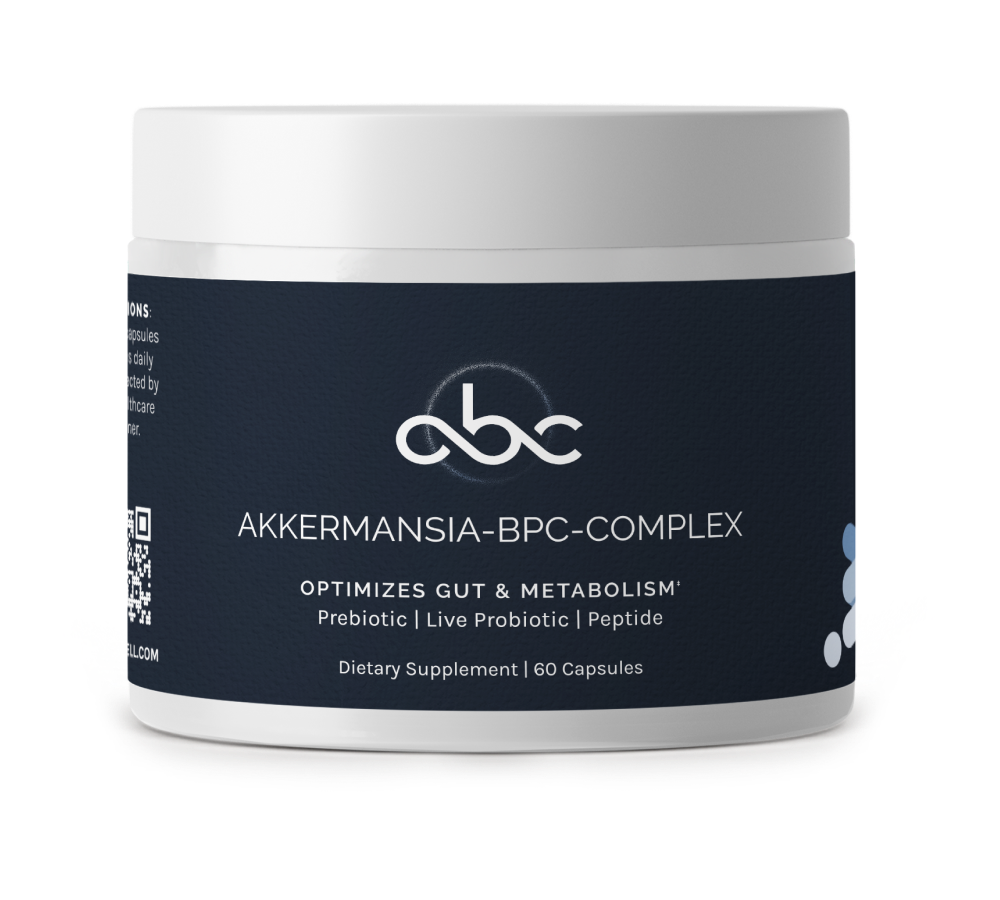Key takeaways
-
Peptide therapy can support everything from skin health to promoting muscle growth, but more isn’t always better. Using too many compounds—or too high a dose—in a peptide stack can overwhelm your system and diminish results.
-
A smart peptide strategy starts with understanding your goal—whether it’s weight loss, muscle development, or skin barrier support. Choosing different peptides without a clear purpose can lead to overlapping effects, inconsistent results, or wasted product.
-
Many peptides work by mimicking growth factors or signaling molecules involved in tissue support, hormone balance, or cellular activity. Still, they're not quick fixes. They’re short chains of amino acids, the basic building blocks of proteins, and they need to be used with intention.
-
While some formulas also include stem cells, collagen boosters, or other actives, more ingredients don’t always mean better results. What matters is how each component in your peptide stack is used—and whether there’s clinical research to support it.
-
Responsible use means paying attention to safety and side effects. Even compounds that are generally safe can lead to unwanted reactions when misused, especially in high doses or poorly planned stacks. Start slow, observe changes, and scale with care.
Peptides are everywhere—in gym talk, wellness forums, and supplement shelves. Some users swear by high amounts and aggressive peptide stacks, hoping for faster gains or better physical results. Others push back, pointing to potential side effects or calling them overhyped.
If you’re somewhere in the middle—interested but cautious—you’re not alone. Getting real results often comes down to one key question: how much should you actually take?
This post clears up one of the biggest myths. That more peptides always lead to better results. In reality, excess can lead to wasted product, unwanted effects, and missed opportunities for real progress.
Peptide stack myths: Why doubling up isn’t always smart
If you're someone interested in muscle growth, anti-aging treatments, or sharper cognitive function, you’ve probably come across the idea of stacking peptides. This approach involves combining multiple compounds—like growth hormone-releasing peptides or collagen peptides—to support multiple goals at once.
Done right, a peptide stack can support body recomposition, fat metabolism, collagen synthesis, and even mental clarity.
But here’s the problem: many people overdo it. Instead of choosing specific peptides with complementary effects, they load up without a plan. That’s when the risks rise:
-
Multiple peptides that target the same pathways can overwhelm the pituitary gland or throw off hormone production.
-
Combining multiple synthetic peptides without guidance increases the chance of allergic reactions or injection site irritation.
-
Using oral supplements and peptide injections at the same time without a clear treatment plan can cause your body to stop responding altogether.
Key takeaway: Stacking isn’t bad, but stacking blindly is. More compounds don’t guarantee better results. Sometimes, they cancel each other out.
The BPC-157 peptide: What the science says
One of the most talked-about compounds today is BPC-157. Known as the “Body Protection Compound,” this peptide has been studied for its potential to support the digestive system, muscle recovery post-exertion, and even skin texture and elasticity.
But here’s where things get murky: online advice for how much BPC-157 peptide to take is all over the place. Some users go far beyond what's been studied in early research, hoping it will speed up results.
The truth? BPC-157 has shown promise at low amounts in early preclinical studies. As an oral supplement, it may support:
-
Tissue resilience after physical strain
-
Lean muscle maintenance
-
Skin elasticity and collagen production
But more BPC-157 doesn’t necessarily mean faster tissue support or greater skin elasticity. Higher amounts may lead to tolerance effects or reduced benefits over time.
What to do instead: Start low, observe how your body responds, and only scale if needed—with the guidance of a healthcare provider.
Peptide injections: When and how to use them responsibly
Peptide injections are often marketed as the fastest way to build muscle mass, support growth hormone activity, and achieve peak performance. And yes, some injectable forms can work quickly, especially when targeting hormone deficiencies or muscle development.
But injectable peptides also carry higher risk:
-
Sterility concerns
-
Injection site irritation
-
Mislabeling or inaccurate dosing
-
Elevated chances of side effects when self-administered
Also consider the context: growth hormone secretagogues (compounds that signal the body to release more growth hormone), for example, were never meant for recreational use. Some are under review by the World Anti-Doping Agency due to misuse among athletes.
Here’s the more responsible route:
-
Use peptide injections only when recommended and sourced from a reputable provider.
-
Avoid stacking injectables with oral supplements unless part of a clearly defined treatment plan.
-
Watch for signs of overuse: fluid retention, headaches, or disrupted metabolic health.
For most people, oral or topical peptides offer a safer path, especially when the goal is skin care, immune system support, digestive balance, or healthy aging.
What happens when you take too much?
You might be tempted to double your dose when results stall. But peptides don’t work like caffeine or pre-workout. Overuse can cause:
-
Receptor desensitization
-
Diminishing returns
-
Unexpected health concerns
Remember: Peptides are amino acids linked in specific ways. They work through subtle signaling, not brute force. That’s why more is not only unnecessary—it’s also counterproductive.
Even in clinical trials, researchers rarely go above moderate levels. Why? Because balance, not overload, is what gets optimal results.
Also read: Are Peptides Safe? Benefits and Risks Explained
What to do instead: A smarter, safer peptide strategy
Let’s reframe the conversation around peptides. Instead of asking, “How much can I take?” start asking, “What’s the lowest dose that still supports my goals?”
Instead of stacking everything at once, ask:
-
What am I trying to support? Muscle building, fat loss, collagen synthesis, or overall health?
-
Which certain peptides are backed by data for that goal?
-
Am I tracking my progress or just hoping for the best?
Here’s a better approach:
-
Choose one high-quality peptide—like BPC-157 or GHK-Cu copper peptide.
-
Start with a low amount (as recommended by the brand or your provider).
-
Track changes over 2–4 weeks: energy, strength, physical resilience, skin, and digestion.
-
Evaluate before adding another compound or increasing the amount.
This works whether you’re aiming to build muscle, fight bacteria, support protein production, or just maintain your well-being.
Also read: GHK-Cu and Anti-Aging Skincare: The Science Behind How Skin Ages
Final thoughts: The smarter way to approach your peptide stack
There’s no denying that peptides hold promise. Some may support muscle integrity, fat loss, collagen production, and even mental clarity. But don’t fall for the myth that more is better.
More isn’t faster. It’s just… more.
Peptides are often explored in wellness routines aimed at healthy aging and physical recovery. But the real power lies in getting the amount right, not from taking more than your body needs.
Glossary
Terms to know:
-
Amino acids: The building blocks of proteins and peptides. Linked in specific sequences, they influence various biological processes including physical adaptation, hormone regulation, and tissue structure.
-
BPC-157: Short for “Body Protection Compound-157,” this peptide is studied for its potential effects on gut barrier support, tissue resilience, and collagen production.
-
Clinical research: Studies conducted under controlled conditions to evaluate the safety and potential effects of compounds, including peptides.
-
Collagen synthesis: The natural process where the body forms collagen, a key protein that contributes to skin flexibility, joint support, and the strength of connective tissues.
-
Copper peptide (GHK-Cu): A naturally occurring peptide that includes copper ions. May support skin firmness, elasticity, and a healthier-looking appearance.
-
Growth hormone secretagogues: Compounds that stimulate the body’s natural production of growth hormone, often used in performance and anti-aging contexts but not intended for recreational use.
-
Peptide stack: A combination of two or more peptides taken together to target multiple goals such as muscle growth, fat metabolism, or skin health.
-
Receptor fatigue: A reduced response over time when certain biological receptors are overstimulated, often caused by using high amounts of the same peptide or hormone.
-
Skin rejuvenation: A broad term often used to describe positive changes in skin appearance, including texture, firmness, and elasticity.
-
Tissue resilience: The body’s ability to tolerate or bounce back from physical strain. Some peptides may support this by influencing cellular integrity and structural protein activity.
-
SOURCES











